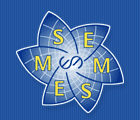
The journal editors' permissions can be set flexibly for each journal and editor category. Permissions are a matter of agreement between the EiC's and the publisher. The permissions and editor categories can be set and changed only by the publisher.
Editor categories are:Not all of them are present for all journals, the main categories being "Editor-in-Chief" and "Editor".
For any of the statuses of an article (unconfirmed, submitted, review, rejected, deleted, copy-editing, copy-edited, teXing, teXed, accepted, transferred) the permissions (none, read, write) can be allocated. "Read" means, you can filter the status and view the corresponding submissions but you cannot edit them or set the status for another submission. The statuses "copy-editing", "copy-edited", "teXing", "teXed" are active only if a copy-editor or a TeX editor is defined for the particular journal. Those statuses for which an editor has permission "none" are not visible.
Also, the actions "Delete-Submissions", "Edit-Authors", and "Set-Target-Issue" can be allowed or disallowed for any editor category.
For example, the default permissions of an "Editor" are:
| Status | Permission |
|---|---|
| unconfirmed | write |
| submitted | write |
| review | write |
| rejected | write |
| deleted | read |
| copy-editing | read |
| copy-edited | read |
| teXing | read |
| teXed | read |
| accepted | read |
| transferred | none |
| Action | Allow |
|---|---|
| Delete_Submissions | yes |
| Edit-Authors | yes |
| Set-Target-Issue | no |
| Author-as-Editor | no |
| Request-Final-Sources | no |
The default permissions of an "Editor-in-Chief" are "write" everywhere except for "transferred" (where it is "read") and "yes" for all actions.
Note that in order to perform any of the "actions" you are allowed, you need write permission on the reigning status as well. If "Delete-Submissions" is allowed, you can also restore "deleted" submissions to their last status before deletion.
In the default configuration, only the Editor(s)-in-Chief can set the status of a paper to "accepted". In such a set-up, when an editor thinks that a paper should be accepted, he should write so to the Editor-in-Chief who will make the final decision and set the status. This ensures that the Editor-in-Chief always has some control over what is accepted and what not. Setting the status of a paper to "accepted" releases an automatic message to the publisher, signalling that the paper is now ready to be processed.
In order to address the individual requirements of a journal, it is possible to set up the system in a way that an editor who is also author of a particular article is automatically omitted from the list of eligible editors in the Online article submission, and such articles automatically hidden from his or her view in the system page. This is taken care of by setting permisison of the action "Author-as-Editor" to "no", as by default.
There is also a feature involving the copy (language-) editor if present, and another involving the TeXing. This works analogously as above, with setting statuses and automatic notification mails. However, in all but exceptional cases, the work of the editorial board on an article starts with the author's submission and ends with acceptance. The production of the article comes afterwards and is normally the sole responsibility of the publisher.
After the status of a paper is set to "accepted", usually the publisher takes over. In the production process, the status is eventually set (by the publisher) to "transferred", which means that the data, possibly after some revision, are transfered to the live database and the articles will eventually appear on the EMS homepage. At the same time, the entry will disappear from the list. Therefore, in order to keep the list reasonably up-to-date and compact, only rejected articles need to be "deleted" eventually.